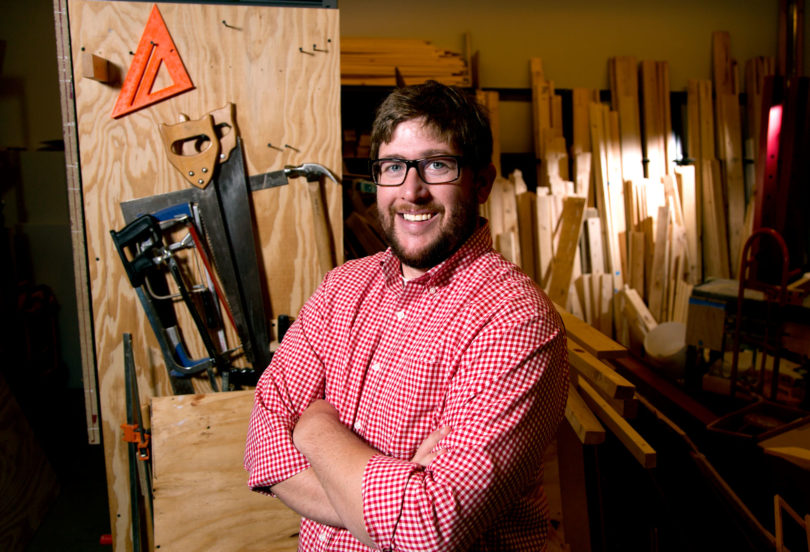UGA athletes aren’t the only ones on campus who know a thing or two about hang time.
As chief preparator for the Georgia Museum of Art, Todd Rivers hangs hundreds of paintings a year—from works the size of legal envelopes to heavy, centuries-old works the size of a fireplace to massive five-piece-paintings that take up the length of a long room.
His job is to prepare the 25 or so art exhibitions the museum hosts every year. That means hanging the paintings, lighting the gallery space and constructing any risers or podiums needed to properly display the art. He has to be an expert on the light levels required by different works on paper and also handy with a circular saw.
“The job is half fine art, half construction worker and cabinet maker,” Rivers said.
On any given day, he might be painting, patching holes in walls, making placards for works of art, packing up artwork in a crate, building a frame or meeting with curators about how to display art in the most thought-provoking and engaging way.
He might don a suit and tie or paint-splattered coveralls depending on his day’s tasks.
An art school graduate, Rivers grew up with art. His mother painted watercolors and portraits and made sure he took art lessons from a young age. That’s when he learned how to paint still lifes and portraits. He describes himself as an avid doodler who as a kid drew faces in the margins of his school notes and copied scenes from Mad magazine to hone his skills.
And when he wasn’t sketching scenes, he was playing with Legos or taking apart and putting back together his Nintendo. Now, he uses those skills not only for museum projects but for home improvement projects like building decks or renovating a house.
Museum work was something he just stumbled into. While looking for jobs after graduating from art school, he walked into a museum and happened to ask if they were hiring. They were. He’s been working in museums ever since.
He spends his days surrounded by art learning tricks of the trade, like how exactly to get a 200-year-old oil painting to hang perfectly straight on the wall.
“There’s a surprising amount of math involved,” Rivers said.
With all of the fractions and angles, he calls it complex geometry and said there’s a lot of figuring on scratch paper and talking it out.
One trick, though, is to use two hooks instead of just one. To save time, he’s learned to use the edge of his tape measure to make marks on the wall, rather than having to get his pencil and make a mark.
Rivers said that when he visits other museums he finds himself looking at the hanging hardware, labels and signing more than he looks at the artwork.
“I get [the attention of] the security guards because they think I’m trying to steal artwork,” he said with a laugh.
He calls his job creative problem solving, but the process of getting an art exhibition from bare walls to an engaging finished product is what he enjoys.
And while Rivers spends his days in the museum, he still tries to find time to paint watercolors or design letterpress wedding invitations or holiday cards.
Rivers also has headed back to the classroom and is taking master’s courses in interior design.
“That’s kind of what exhibition design is, designing an interior space,” Rivers said. “So I’m interested in learning how I can take these concepts that I learn in the program to make the exhibitions better.”







